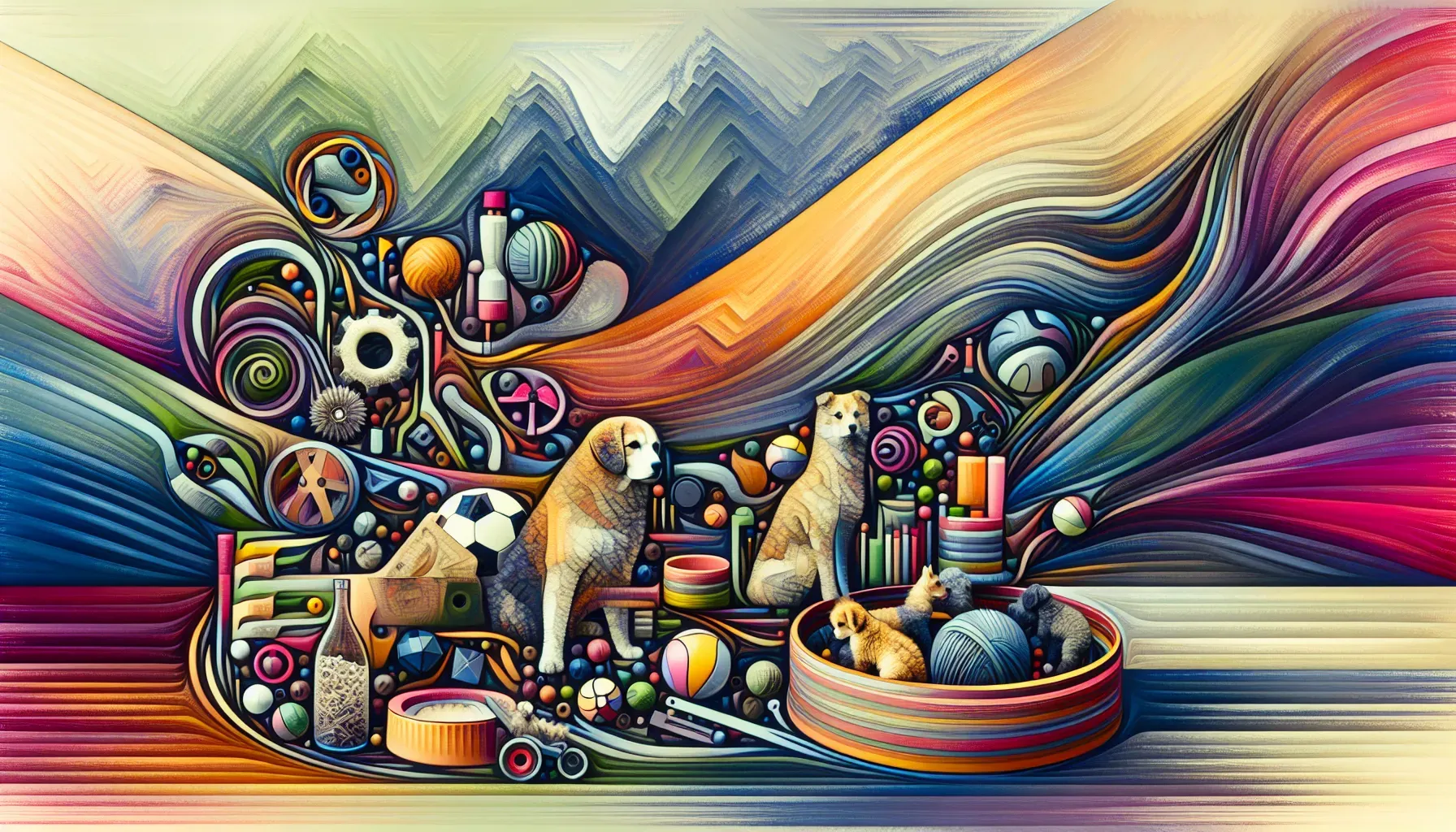
Keeping pets engaged and mentally stimulated is crucial for their overall well-being. DIY toys can provide mental and physical exercise, prevent boredom, and strengthen the bond between you and your pet. When crafting homemade toys, it's essential to prioritize safety and stimulation. Here are some fun and safe DIY toy ideas:
Braided T-shirt Chew Toy: Old t-shirts can be repurposed into a durable chew toy. Cut the shirt into strips, braid them together, and tie knots at both ends. This toy provides a great outlet for your pet's chewing instincts.
Tennis Ball Puzzle: Cut a small hole in a tennis ball and fill it with treats. Watching your pet figure out how to retrieve the treats will keep them mentally engaged and entertained.
Cardboard Box Hideout: Turn an old cardboard box into a cozy hideout for your cat or small dog. Cut holes for entry and exit, add some blankets or pillows inside, and watch as your pet enjoys their new private space.
Incorporating Interactive Elements for Mental Stimulation
DIY toys can be more than just objects for pets to play with; they can also serve as tools for mental stimulation. Incorporating interactive elements into homemade toys can help keep pets mentally active and sharp.
DIY Treat Dispenser: Create a simple treat dispenser using a plastic bottle. Cut holes in the bottle that are just large enough for treats to fall out when the bottle is rolled or nudged. This engages your pet's problem-solving skills as they work to release the treats.
Feather Wand: Attach feathers to a stick or dowel to create an interactive feather wand toy for cats. The unpredictable movement of the feathers mimics natural prey, satisfying your cat's hunting instincts and providing mental stimulation.
Utilizing Household Items for Pet Playtime
Many household items can be repurposed into engaging toys for pets. Not only does this save money, but it also promotes creativity and sustainability in pet care.
Toilet Paper Roll Treat Puzzle: Fold the ends of a toilet paper roll inward to close them off, then fill it with treats and fold the other ends. This simple puzzle encourages pets to roll and manipulate the roll to access the hidden treats inside.
Plastic Bottle Cruncher: Remove the cap and labels from a clean plastic bottle and put it inside an old sock. Tying off the open end creates a crinkly, crunchy toy that many cats find irresistible.
Meeting Specific Play Needs for Different Pets
Different pets have different play needs based on their species, age, size, and personality. Tailoring DIY toys to meet these specific play needs ensures that all pets receive appropriate physical and mental stimulation.
Sensory Dig Box for Small Animals: Create a dig box filled with shredded paper or safe bedding material for small animals like rabbits, guinea pigs, or ferrets. This allows them to exhibit natural digging behaviors while providing mental enrichment.
Scent Trail Game for Dogs: Hide treats around the house in locations where your dog can easily find them by following their scent. This taps into their keen sense of smell and innate desire to explore, keeping them mentally engaged while satisfying their natural instincts.
Ensuring Durability and Safety of DIY Pet Toys
When creating DIY toys, it's important to ensure that they are durable and safe for pets to use. Regularly inspecting homemade toys for wear and tear can prevent potential hazards such as ingestion of small parts or sharp edges.
Use non-toxic materials: Always choose materials that are safe for pets if ingested.
Avoid small parts: Ensure that all components are securely attached to prevent accidental swallowing or choking hazards.
Rotating Toys to Maintain Interest and Engagement
Pets, like humans, can get bored with the same toys over time. Rotating homemade toys can help maintain your pet's interest and engagement.
- Toy rotation schedule: Introduce new DIY toys on a rotating basis, keeping a few toys aside while offering new ones. This keeps your pet curious and excited about playtime.
In conclusion
Creating engaging DIY toys for pets is not only cost-effective but also strengthens the bond between you and your pet while promoting their overall well-being. By prioritizing safety and stimulation, incorporating interactive elements, repurposing household items, meeting specific play needs, ensuring durability, and rotating toys regularly, you can provide enriching play experiences for your beloved furry companions.






